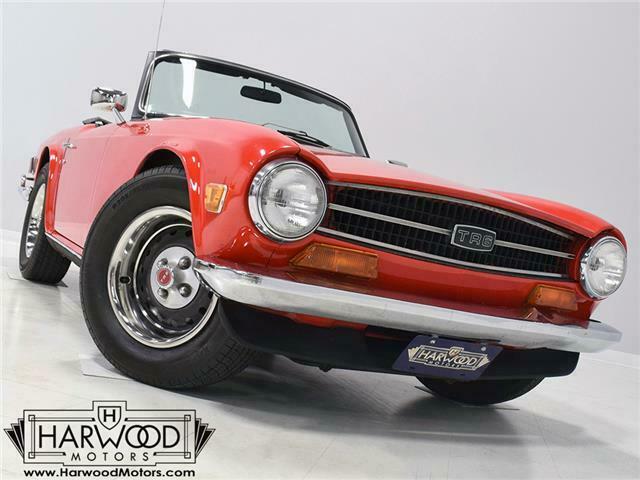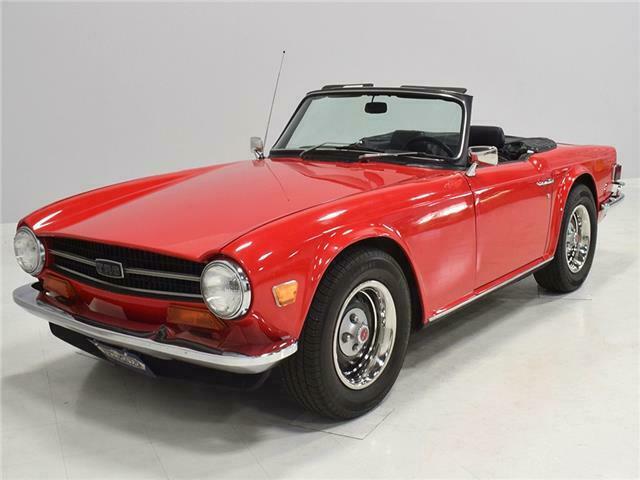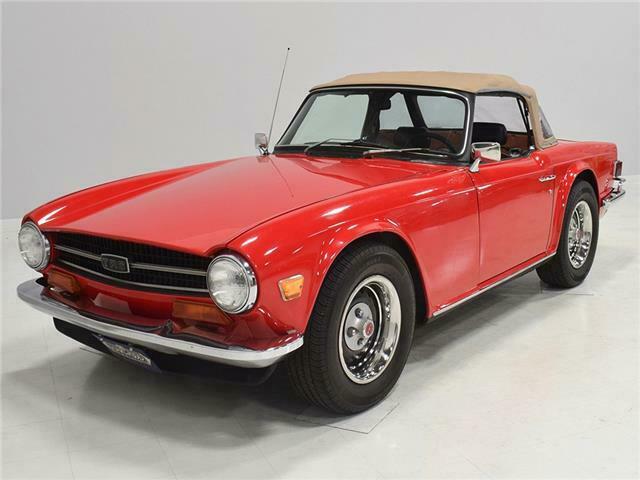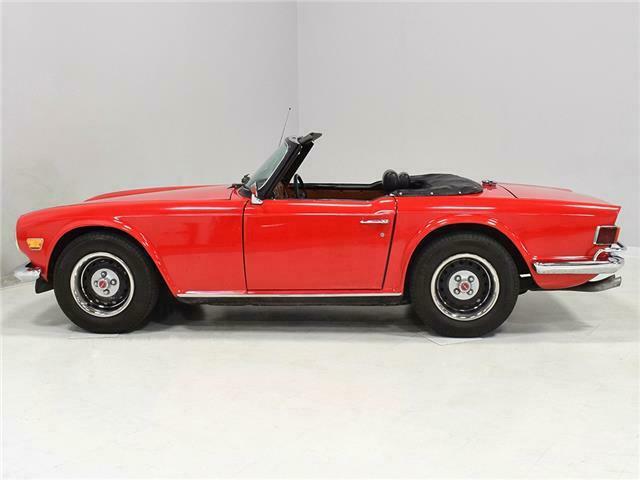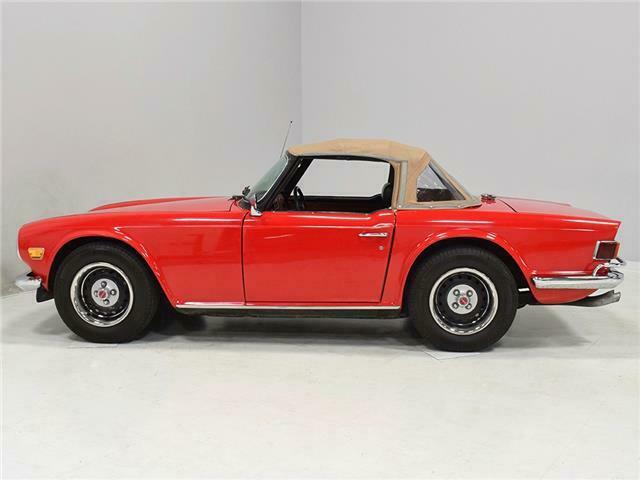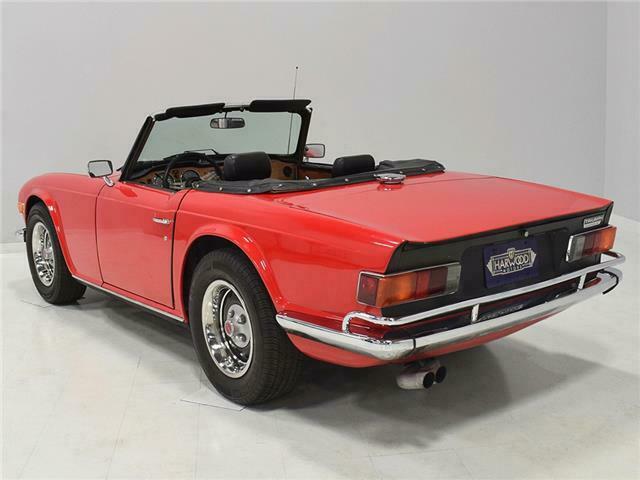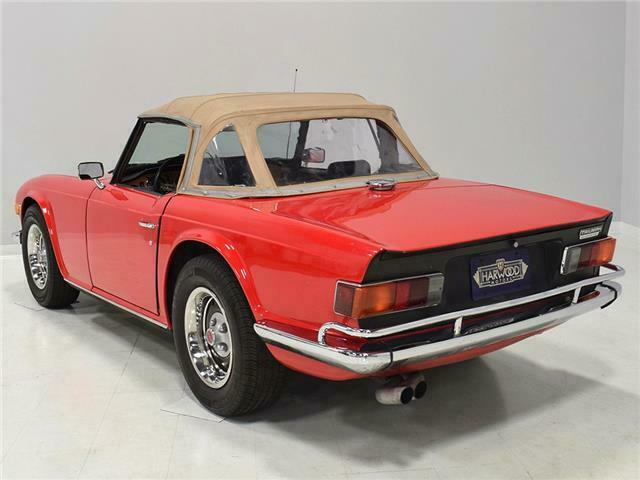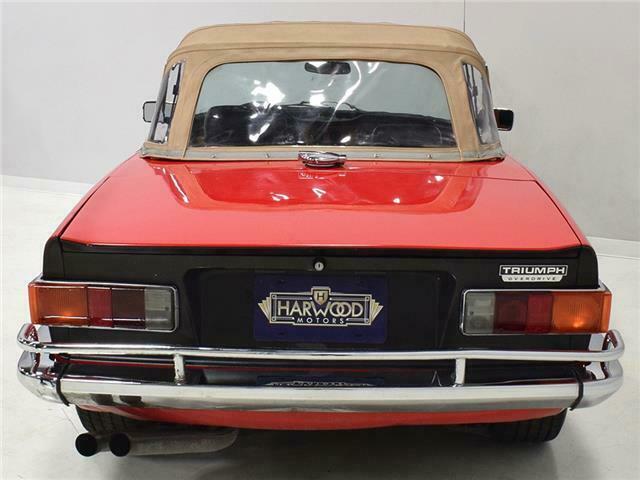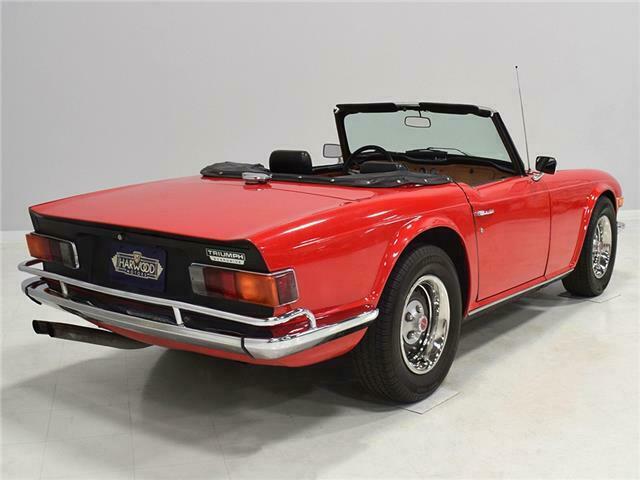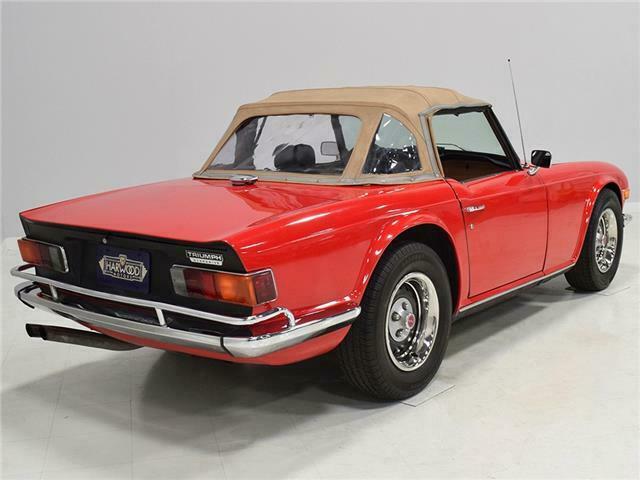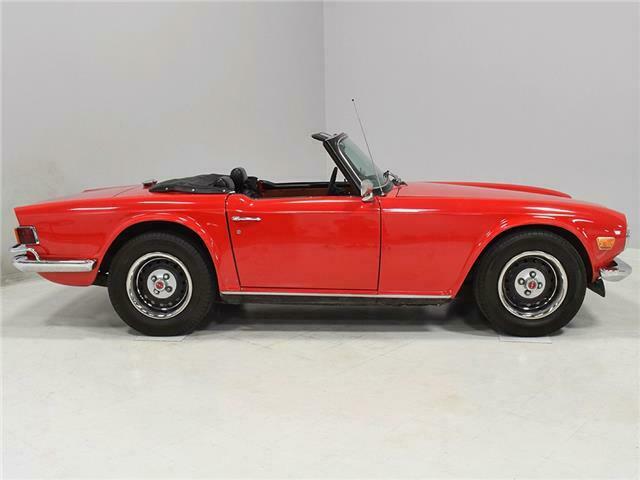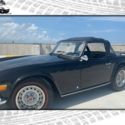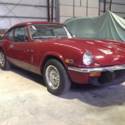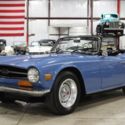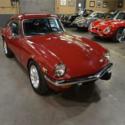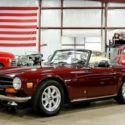1973 Triumph TR6 38258 Miles Red 2.5 liter inline-6 4-speed manual + overdrive
| Make: | Triumph |
| Model: | TR-6 |
| Type: | -- |
| Trim: | -- |
| Year: | 1973 |
| Mileage: | 38258 |
| VIN: | T3790CF |
| Color: | Red |
| Engine: | 2.5 liter inline-6 |
| Fuel: | Gasoline |
| Transmission: | Manual |
| Drive type: | -- |
| Interior color: | Black |
| Vehicle Title: | N/A |
| Item location: | Local pick-up only |
1973 Triumph TR-6 -- Additional Info:
While we Americans like to think that we perfected the “big engine in a small car” idea, the British aren’t too shabby at execution, either. Sure, there are plenty of little cars with equally little engines running around, but it’s all about perspective. A 350 cubic inch engine in a 3500 pound car is fun to drive. But what about a 150 cubic inch engine in a 2200 pound car? Now you’re talking exciting! Better handling, better brakes, and a... connection to the road that you just can’t get when there’s almost two tons of steel around you. That’s the key to the Triumph TR6: the British performance car that you never recognized for what it is. This 1973 Triumph TR6 has never been apart, so it has a traditional British car feel: worn-in but not worn-out. It isn’t perfect, but none of its joyous road manners have been diluted and in its current state, you’ll never hesitate to set out for the open road without a care in the world. That’s the advantage of the imperfect car—no worries. Bright red is the car’s original color and it was treated to a fairly decent respray a few years ago, so it looks bright and clean. The body panels are straight and don’t seem to have spent much life in an adverse climate, so the slab-sided bodywork lines up rather well. The TR6 was an evolution of the TR4, although a fairly comprehensive restyling by the designers at Karmann gives it a unique identity that’s extremely attractive. Triumph fans will quickly recognize the kick-up behind the doors as part of the TR4 look, but the handsome nose with twin headlights faired into the fenders and the kamm-back design of the blacked-out tail make it totally unique. This car pre-dates the rubber bumpers that marred later versions, so the delicate bumpers look great against the red paint and the marker lights are visible where they’re supposed to be under the grille. The car doesn’t have stripes or decals, although adding the traditional TR6 Union Jack sticker on the rear quarters would be a great idea. The black and tan interior features brand new seat covers and fresh foam underneath, so they look great and are all-day comfortable. It was a conscious decision to go with the black seats instead of the original tan, and working with the black dash pad, steering wheel, and console, it all has a very cohesive look. The dashboard is made of real wood, not some plastic substitute, and all the original Smiths gauges are fully operational. In fact, everything works, including the mediocre heating system and the all-new Sony AM/FM/CD stereo that sounds pretty good in the open cockpit. The three-spoke wheel feels meaty in your hands and is big enough that you can toss the relatively lightweight TR6 around with ease, even without power assist. The 4-speed shifts cleanly, although the gates are little vague, and during a recent refurbishment, a factory-style overdrive was added, which is actuated by the stalk on the left side of the steering column. The carpets are in good order, although they’re older, and heavy-duty rubber floor mats mean you don’t have to think twice about getting in and going out. Weather protection is decent, thanks to a recent tan convertible top, which includes the correct silver reflective strip at its base, and a black boot and full tonneau cover are included with the car. There’s also a decent-sized trunk that makes this a good car for a weekend getaway. That’s all nice, but we like the TR6 because of the burly 2.5-liter inline-6 under the long hood. Remember, we’re talking about a very small car, so don’t be fooled into thinking that this isn’t a performer with just a six-cylinder engine. It has been recently rebuilt to stock specs and yes, dual carburetors were standard equipment. There’s a modern alternator up front, as well as a Pertronix ignition system in the original distributor, so it lights off easily with just a little choke, and these big-bore British sixes have a sound like nothing else. There’s a big hit of torque available at almost any speed and while it isn’t a high-RPM screamer, you will enjoy running it through the gears and listening to the baritone howl of the exhaust. We’ll admit that the undercarriage is a bit crusty—it hasn’t been restored and the car is now more than 40 years old. But the important parts are solid: the frame and the rocker boxes. There are some amateur patches in the floors but I think I could overlook those in the interest of simply having fun, and none of it compromises the structure of the car or its ability to deliver smiles on the road. The 4-speed manual has a fresh clutch attached to it, so it’s crisp and lively, and the aforementioned overdrive makes this a reasonable high-speed cruiser. The all-independent suspension makes for a very competent little sports car and this TR6 never seems to plant a tire wrong. The limits aren’t like a modern performance car, but you can use 90% of this car’s performance without endangering everyone else. The torquey six makes shifting purely optional and the brakes are quite good considering the car’s featherweight curb weight. Factory steel wheels wear bright trim rings and hubcaps, along with a set of 205/70/15 Michelin radials that fill the fenders properly. Designed for fun and only fun, the TR6 is on our short list of cars to buy and hold. Earlier cars like the TR3 and TR4 (never mind the TR250, which has already skyrocketed) are seeing big gains in the market and we’ve seen time and time again that a high tide tends to float all the boats. These cars can’t be this affordable forever and we’d argue that the TR6 is the best-driving of them all. This is fun on wheels, nothing more and nothing less. Call today!
